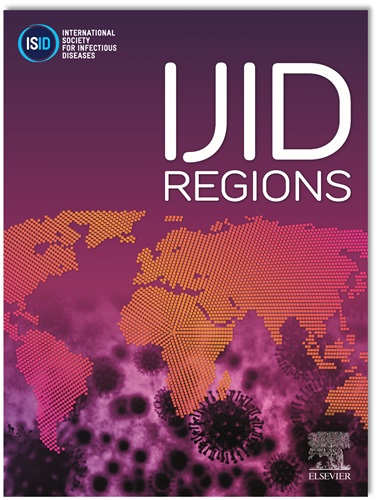Integral Scientific Advice for Outbreak Response: Lessons learned from an Avian Influenza Simulation in the Netherlands
IF 4.3
2区 医学
Q1 INFECTIOUS DISEASES
引用次数: 0
Abstract
Background
The continuing avian influenza outbreaks in animals pose a public health threat worldwide. Concerns about the risk for humans are raising, now we see spread among different mammal species and animal to human transmission. The question raises how governments are best advised about this impending outbreak. One of the lessons learned from the COVID-19 pandemic is that future pandemics demand swift and effective collaboration across disciplines to address diverse consequences and priorities. In many countries the governance framework for outbreaks requires different disciplines to provide advice separately to the government. We conducted an avian influenza outbreak simulation to explore development of integrated scientific advice in pandemics.
Methods
We organised two simulation events on 17 April and 24 May 2024. Prior to the simulation exercise, literature research and in-depth interviews were conducted with experts. During the simulations, the scenario dealt with different phases of the start of a pandemic situation due to a novel influenza virus from zoonotic origin. The scenario on 17 April depicted a variant of avian influenza spreading via pigs, including the first cases with human-to-human transmission, triggering significant health implications for humans and animals. In May the simulation continued with widespread human-to-human and cross-border transmission, hence the start of a new pandemic. A best- and worst-case scenario was illustrated from a biomedical and social-economic viewpoint. On both events, 20-23 Dutch experts from different disciplines initially crafted their recommendations independently. Three interdisciplinary groups then converged, utilizing an evidence-to-decision framework. Thematic analysis was conducted on notes of group and plenary discussions, and reflection and evaluation sessions.
Results
The interdisciplinary discussions helped participants identify the blind spots within the disciplinary recommendations. A sense of urgency differed between sectors, leading to diverse point of focus within the expert teams. The biomedical team focussed on limiting the spread of the virus, while the the social-economic team focussed on mitigating the impact of the outbreak within society. Hence, the biomedical team advised measures like a local lockdown and active surveillance, where the social economic team preferred citizen consultations, exploration of economic and mental support and proper communication.
During integrative discussion, the various disciplines brought valuable insights from respective sectors, converging the different views towards a shared focus and creating mitigating advice.
For example, the integral advice provided various mitigating measures to interventions with a large social impact, e.g. setting up an auxiliary structure to quickly identify and support vulnerable groups and setting up tailored communication structures.
Conclusions
Interdisciplinary discussions are needed in pandemic advice to identify blind spots within the disciplinary recommendations. Preparedness and alignment of guidelines in the different expert fields will support a shared focus and pace of action in case of an outbreak and lead to better pandemic preparedness.
疫情应对的综合科学建议:从荷兰禽流感模拟中吸取的经验教训
动物中持续爆发的禽流感对全世界的公共卫生构成威胁。对人类风险的担忧正在增加,现在我们看到不同哺乳动物之间的传播以及动物对人类的传播。问题是如何向政府提供应对即将到来的疫情的最佳建议。从2019冠状病毒病大流行中吸取的教训之一是,未来的大流行需要迅速有效的跨学科合作,以应对各种后果和优先事项。在许多国家,疫情治理框架需要不同学科分别向政府提供咨询意见。我们进行了一次禽流感暴发模拟,以探索在大流行中发展综合科学咨询。方法我们于2024年4月17日和5月24日组织了两次模拟活动。在模拟演习之前,对专家进行了文献研究和深度访谈。在模拟过程中,该情景处理了由人畜共患的新型流感病毒引起的大流行局势开始时的不同阶段。4月17日的情景描述了一种通过猪传播的禽流感变种,包括首批人际传播病例,对人类和动物的健康产生重大影响。5月,模拟继续出现广泛的人际传播和跨界传播,因此开始了一场新的大流行。从生物医学和社会经济的角度阐述了最佳和最坏的情况。在这两场比赛中,来自不同学科的20-23名荷兰专家最初独立起草了他们的建议。然后,三个跨学科小组利用从证据到决策的框架聚合在一起。对小组和全体讨论的记录以及反思和评价会议进行了专题分析。结果跨学科讨论有助于参与者识别学科建议中的盲点。不同部门的紧迫感不同,导致专家小组内部的重点不同。生物医学小组的重点是限制病毒的传播,而社会经济小组的重点是减轻疫情对社会的影响。因此,生物医学小组建议采取局部封锁和主动监测等措施,而社会经济小组更倾向于与公民协商,探索经济和精神支持以及适当的沟通。在综合讨论中,各个学科带来了来自各自部门的宝贵见解,将不同的观点汇聚到一个共同的焦点上,并提出了缓解建议。例如,综合咨询为具有较大社会影响的干预措施提供了各种缓解措施,例如建立辅助结构以快速识别和支持弱势群体,以及建立量身定制的沟通结构。结论在大流行建议中需要进行学科讨论,以确定学科建议中的盲点。防范和协调不同专家领域的指导方针将有助于在发生疫情时共同关注重点和行动速度,并有助于更好地防范大流行病。
本文章由计算机程序翻译,如有差异,请以英文原文为准。
求助全文
约1分钟内获得全文
求助全文
来源期刊
CiteScore
18.90
自引率
2.40%
发文量
1020
审稿时长
30 days
期刊介绍:
International Journal of Infectious Diseases (IJID)
Publisher: International Society for Infectious Diseases
Publication Frequency: Monthly
Type: Peer-reviewed, Open Access
Scope:
Publishes original clinical and laboratory-based research.
Reports clinical trials, reviews, and some case reports.
Focuses on epidemiology, clinical diagnosis, treatment, and control of infectious diseases.
Emphasizes diseases common in under-resourced countries.

 求助内容:
求助内容: 应助结果提醒方式:
应助结果提醒方式:


